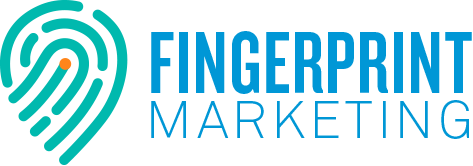 Are you over-whelmed by e-clutter and don’t know where to start to become better e-organized? When you turn on your computer, are you hit with a screen full of icons and waste time looking for a document or picture you need? Do you find that as the minutes tick by, your stress level rises because what should have been a simple project can’t even begin because you can’t find the file you need? Do you imagine there is a better way to manage your electronic stuff? Well, there’s good news: There are effective ways for managing and organizing electronic files that will help reduce your e-clutter now and moving forward. With the right tools and know-how you can conquer your digital disorder, take back wasted time and reduce stress.
Are you over-whelmed by e-clutter and don’t know where to start to become better e-organized? When you turn on your computer, are you hit with a screen full of icons and waste time looking for a document or picture you need? Do you find that as the minutes tick by, your stress level rises because what should have been a simple project can’t even begin because you can’t find the file you need? Do you imagine there is a better way to manage your electronic stuff? Well, there’s good news: There are effective ways for managing and organizing electronic files that will help reduce your e-clutter now and moving forward. With the right tools and know-how you can conquer your digital disorder, take back wasted time and reduce stress.
The costs of digital disorganization are similar to that of all other forms of disorganization. Disorganization results in wasted time, increased stress and missed business opportunities. Below are some tips and strategies designed to help you regain control over your digital data.
Clean Up Your Digital Desktop
Your digital desktop is similar to a real desktop in that it is a launch pad for your work. Keeping a tidy digital desktop is less visually distracting and helps you find what you need when you need it. If want to have quick access to applications and files on your desktop, use Shortcuts (Windows) or Aliases (Mac) instead of the actual file or application. The original should always and only be stored in your electronic filing system, not on your desktop.
Shift Your Thinking to Better Organize Digital Files
Unlike your paper filing system, your computer can search for files for you. Many people organize their electronic files similarly to their paper filing system and waste time drilling down through folders and sub folders to find what they need. When you think about your data like a computer, employ consistent naming conventions and put your data in broader files without lots of subfolders, you can better take advantage of your computer’s search capabilities and find things quickly. This also reduces time you might spend drilling down through folders if you are visually searching.
Commit to a Search-Friendly and Consistent File Naming Convention
 Think about how your computer sorts and searches for and displays data. When you use a file naming system that coordinates with computer logic, you can quickly find what you need.
Think about how your computer sorts and searches for and displays data. When you use a file naming system that coordinates with computer logic, you can quickly find what you need.
A good file naming strategy includes:
A date – The date the file was created and in a format that will sort like items together. Ideally a numerical date starting with the year, followed by the month and then the date of creation or modification – 20140323.
A descriptive name – Create a name that accurately describes the file so you don’t have to open it to know what’s inside. If you have a series of files that belong together, a collection of pictures form the same event for example, use a naming strategy that includes numbers. For example, 20140323 My Birthday 01, 20140323 My Birthday 02, etc.
Adopt a consistent routine of naming files consistently and apply it every time you create a new file (new name) or upload a file into your filing system (rename).
Plan for an Organized Digital Filing System
Consider how you think about your data. Do you think about it in terms of clients, projects or chronologically? How you think about your data informs how you can structure an organized filing system. Because digital search is so powerful, your electronic filing system can include broader folders and fewer subfolders than a paper system. This is one area where it is okay to be a little less organized; because of the robust search capabilities of today’s computers and devices. As you are building your digital filing system, we suggest you sketch it out on paper first, planning out your major categories and primary folder structure.
Plan and Prepare for Digital Disaster
Make a plan and adopt a routine for preparing for digital disaster; for when there is a natural disaster, for your computer crashes and even for when you are away from your computer and need access to your data.
An organized backup strategy:
Stores backup data in at least 2 places. This could be an external hard drive and cloud storage.
Includes a consistent backup schedule. For many people it is best to take advantage of automatic backup features. This takes out the work of remembering and the risk of not doing it. Be honest with yourself about what you are likely to do and choose a backup process that allows you to successfully backup your data.
Debbie Rosemont is the founder of Simply Placed Professional Organizers and Productivity Consultants work with clients to help them better manage their digital (and physical) stuff so that they can reduce stress and increase productivity. To learn more about digital organization or to learn about other ways to improve your organizational skills and increase productivity, visit the Simply Placed at www.itssimplyplaced.com.
Looking for Seattle Digital Marketing? Call Today!

